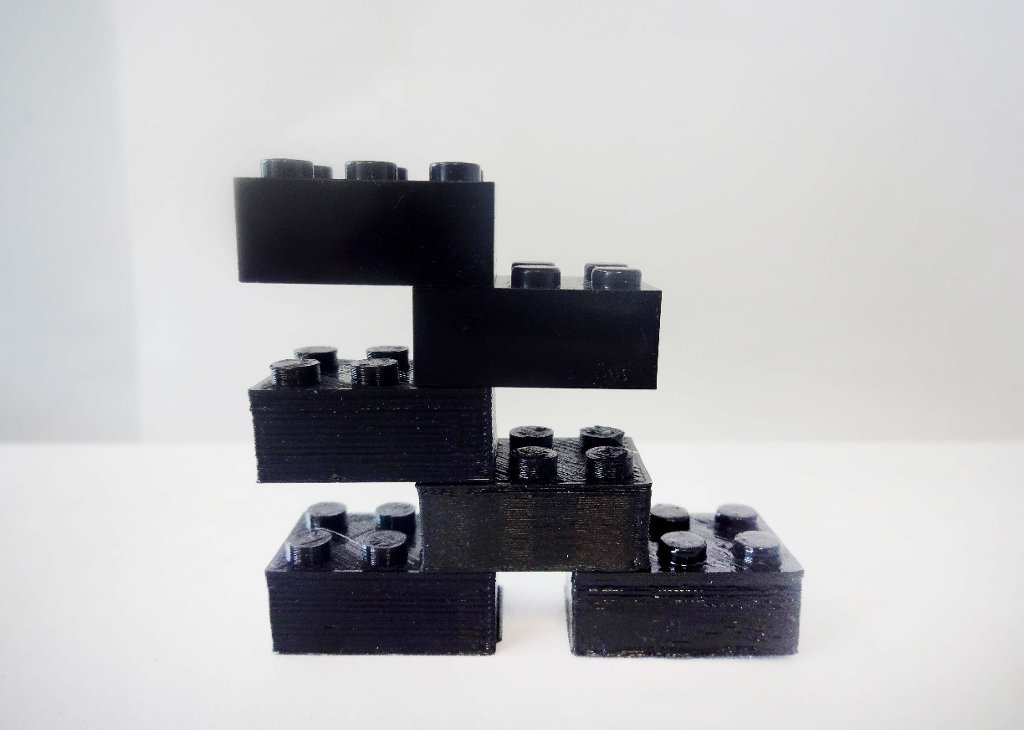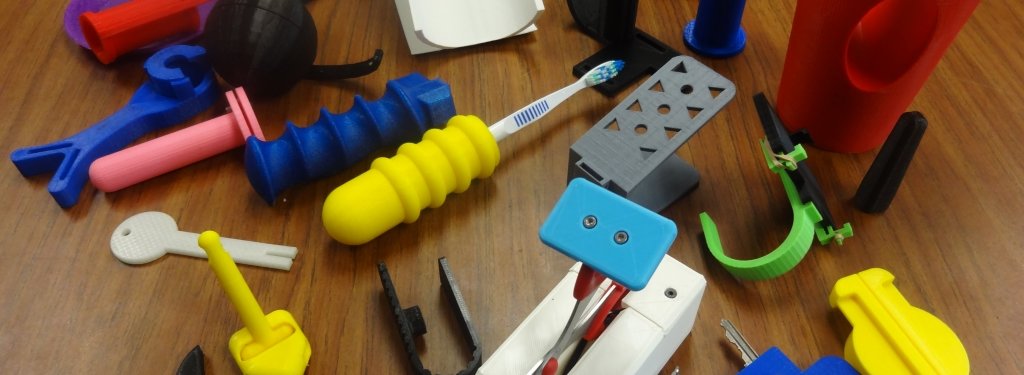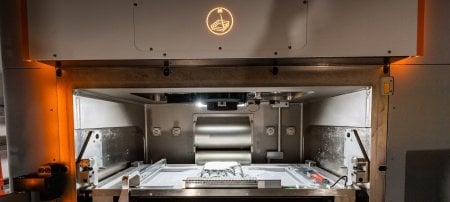A snapshot of Associate Professor Joshua Pearce's 3D-printed world.
Ditch the online ordering and stacks of catalogs. If you can imagine it, Associate Professor of Electrical and Computer Engineering Joshua Pearce can probably 3D print it for pennies on the dollar—and so can you. Pearce and his team of students are working to revolutionize open-source 3D printing, finding solutions and creating products of all scopes and sizes.

Plastic for Pennies
Why buy plastic filament when you can make your own nearly for free? According to Pearce, average old plastic milk jugs—cleaned, shredded, and run through a RecycleBot—can become quality 3D printer filament. And since processing milk jugs uses significantly less energy than traditional recycling, you'll be doing the world an environmental favor as well. Win-win.
Synthesizing with Sunshine
3D printing has many attributes, but portability hasn't been one of them—until now. Pearce's latest development is a set of open-source solar-powered 3D printers—one designed for schools and businesses, the other for remote communities. The first features an array of solar photovoltaic panels and a stand-alone printer, which can be used to print anything from toys to science lab equipment. The second system is a smaller, more-portable RepRap.
"If you're in the Peace Corps going to an off-grid community, you can take this printer in your suitcase. It's a mobile manufacturing facility that can make whatever you and the community need or value. It has nearly unlimited flexibility."
A Smart Syringe
Do a quick online shopping search and you’ll find that syringe pumps—equipment commonly used in medical and research labs to dispense precise amounts of liquid—will set you back hundreds or thousands of dollars. Pearce’s new open-source syringe pump design library could make those hefty price tags a thing of the past. As Pearce and his students proved, pumps can be produced quickly on a RepRap 3D printer, are functionally equivalent to commercial systems, can be operated with a smartphone, and are completely customizable.
More Than Decor
First Celtic crosses, then the world. Pearce's Fall 2014 Open-Source 3D Printing class—a mix of fifty undergraduate and graduate students —was the largest group of students ever to come together and build their own 3D printers. After completing the printers, students were tasked with several projects of increasing complexity: a piece for a climbing "rock" wall, Celtic knot décor, appropriate technologies for sustainable development, and improvements to the printers themselves. For one assignment, students teamed up and used their 3D printers to provide high-level solutions to Michigan Tech researchers in need. All told, the class produced millions of dollars of value by freely sharing their open source designs.

Bacterial Slime: It's What's for Supper
When Pearce isn't busy working to open-source the world, he's thinking about feeding it. A new research project led Pearce to write and publish his latest book, Feeding Everyone No Matter What. In it, he explores what may sustain the human race in the event of catastrophic crop failure. (Spoiler alert: it's not burgers and fries.) Regardless of the scenario, Pearce found that wood, leaves, and fossil fuels converted to food using combinations of bacteria, bugs, fungi, and rats would be the most viable options.
Learn more about Pearce's work at https://www.mtu.edu/3dprint/ and https://www.mtu.edu/feedtheworld/.
Michigan Technological University is an R1 public research university founded in 1885 in Houghton, and is home to nearly 7,500 students from more than 60 countries around the world. Consistently ranked among the best universities in the country for return on investment, Michigan's flagship technological university offers more than 120 undergraduate and graduate degree programs in science and technology, engineering, computing, forestry, business, health professions, humanities, mathematics, social sciences, and the arts. The rural campus is situated just miles from Lake Superior in Michigan's Upper Peninsula, offering year-round opportunities for outdoor adventure.





